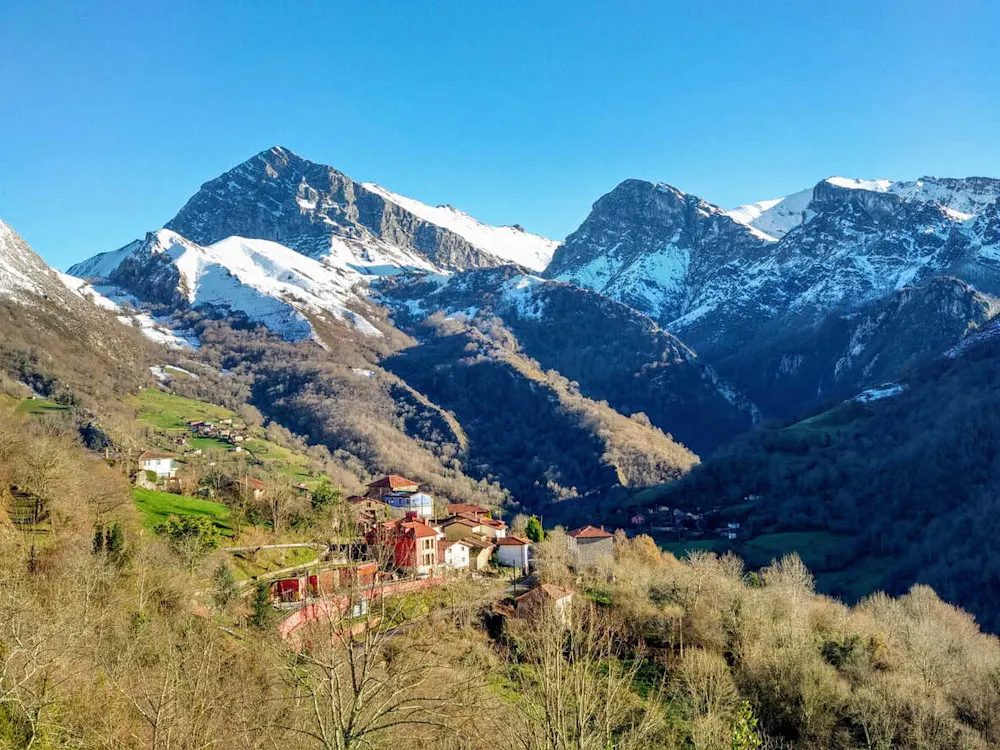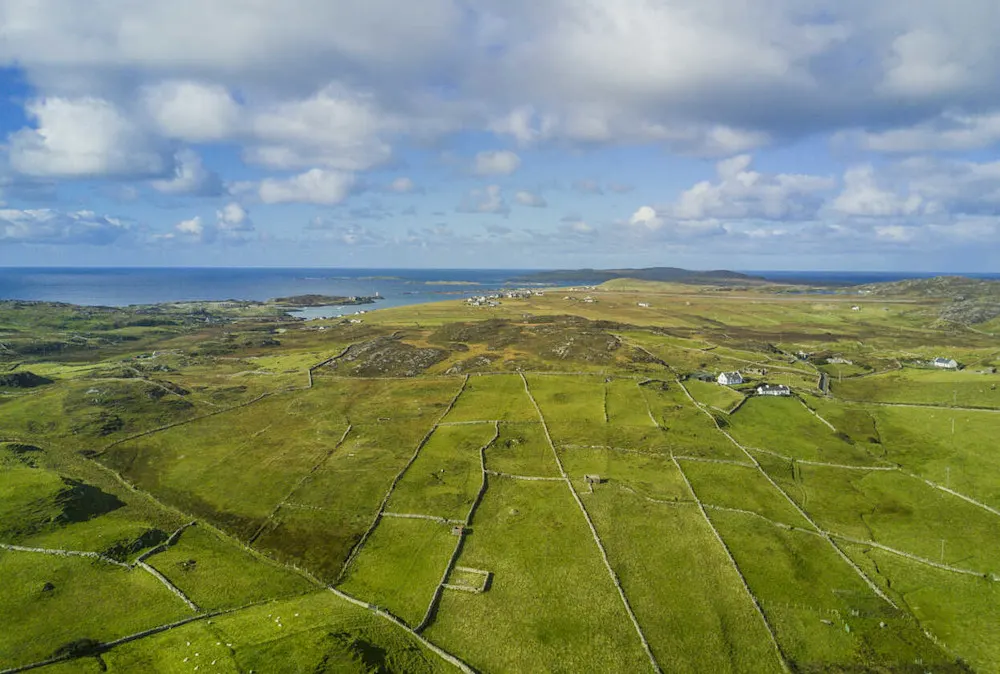No doubt you’ve seen the stories breathlessly chronicling the cities and countries willing to sell you a house for $1 or less.
Dilapidated, rundown ruins that haven’t sheltered a human in decades. All yours!
With a few strings attached—like having to remodel at a cost sure to exceed your estimates because, well, these are ancient structures in need of serious architectural revitalization. And they’re often subject to strict (read: pricey) rules designed to preserve local heritage.
Towns ginned up those deals in an effort to reverse population decline and economic stagnation. Now comes a new take on the trend: Move here, and we’ll pay you!
How to Get Paid to Live in Europe
How to Get Paid to Live in Europe
We’ll show you where (and how) Americans are being paid—up to thousands of dollars—to live in Europe right now!
Sign up for your free report!

By submitting your email address, you will receive a free subscription to IL Postcards, Overseas Dream Home, The Untourist Daily and special offers from International Living and our affiliates. You can unsubscribe at any time, and we encourage you to read more about our Privacy Policy.
By my count (and I might well have missed some), roughly a dozen cities and/or countries will pay you to relocate within their borders. In some cases, the free dinero is tied to being willing to locate a start-up company there. In other instances, cash-grabbers must relocate to certain (very) rural areas where the niceties of modern living are absent.
Whatever the case, the free cash raises one immediate question: Would you really move here for the money?
I started asking myself that question after a video popped up on my TikTok feed a few months ago: "Spanish town will pay you thousands to move there."
So, I started digging into these places, curious about not only the cash incentives, but also whether any of them were worth the trade-offs.
Here’s a sample of the offers and what you can really expect. Let’s start with that TikTok about the Spanish town willing to pay you thousands to move there.
Ponga, Spain

Without question, Ponga is gorgeous.
Hidden away in a verdant river valley in Spain’s Asturias region in the far northwest corner of the country, Ponga is surrounded by the rugged and illegally picturesque Cantabrian Mountains. The region is marked by a UNESCO-designated biosphere famous among hikers and the outdoorsy set.
You have to live in Ponga for at least 5 years.
And if you’re willing to move there, the government will pay you about $3,100 per person. A couple with a child receives double the amount. Have a child there, and it’s another $3,100.
Get Your Free Spain Report Today!
Get Your Free Spain Report Today!
Get more information about Spain and other countries in our free daily postcard e-letter. Simply enter your email address below and we'll also send you a FREE REPORT — Live the Good Life in Sunny, Affordable Spain.

By submitting your email address, you will receive a free subscription to IL Postcards, Overseas Dream Home, The Untourist Daily and special offers from International Living and our affiliates. You can unsubscribe at any time, and we encourage you to read more about our Privacy Policy.
But Ponga’s beauty comes at a cost: Isolation.
Roughly 600 people populate the place. The nearest big city, Gijon (population 270,000), is 90 minutes away via a primarily two-lane highway along Spain’s Atlantic coast. The nearest airport is Asturias, about two hours away in Santiago del Monte. Banks and supermarkets are also an hour or so away, as are major medical centers, though a small regional medical facility is nearby.
Plus, you have to commit to living in Ponga for at least five years. And winter is often snowy.
Still, for those who seek quietude in a phenomenal natural environment, Ponga has that in abundance. And it has "very fast" internet connections, according to internet speed detectors. Also, while poking around, I found a truly lovely twobed, two-bath house with envy-inducing mountain views for about $182,000.
Antikythera, Greece

Everyone, it seems, wants to live on a Greek island. And with good reason, which I don’t need to explain.
If that’s you, then maybe Antikythera is your pathway.
The small island sits on the edge of the Aegean Sea, just off the northwest tip of Crete. It’s the quintessential Greek isle, surrounded by those quintessentially blue Aegean waters. It’s also the epitome of a completely relaxed, unrushed, do-clocks-even-exist beachy life.
Under the direction of the Greek Orthodox Church of Kythera (a larger island nearby), up to five families can collect about $515 per month for three years if they move to the island… plus, each family will receive a free, new-construction house to live in.
All of which sounds pretty sweet.
But…
As with Ponga, isolation is again the entry price. And this isolation is on a very different level.
Antikythera is home to just a few dozen residents. There are no banks or ATMs. No real supermarkets other than a coffee shop that plays the role of supermarket and central meeting spot. And the island is only accessible by ferry.
Get Your Free Greece Report Today!
Get Your Free Greece Report Today!
Learn more about Antikythera and other hidden places in Greece and other countries in our free daily postcard e-letter. Simply enter your email address below and we'll also send you a FREE REPORT — Retire in Greece—Find Your Dream Retirement in This European Archipelago.

By submitting your email address, you will receive a free subscription to IL Postcards, Overseas Dream Home, The Untourist Daily and special offers from International Living and our affiliates. You can unsubscribe at any time, and we encourage you to read more about our Privacy Policy.
The shortest ferry ride is just under two hours to a port in northwest Crete, which is in turn about 40 minutes from Chania, the nearest airport of any size (and the nearest location for anything other than the most minor medical need).
In winter, when the Aegean regularly acts churlish, ferries often stop ferrying. So, you’re stuck on a small island of less than eight square miles, and hopefully you’ve stocked up on food and drink because the regular supply deliveries from Athens and Crete halt with the ferry shutdowns.
But, hey—you can tell all your friends that you live on a Greek island.
Note, though, that the program has not yet officially launched and doesn’t have a timeline, since the homes are not yet built.
Sardinia, Italy

Think: A big fat Greek lifestyle, just midway across the Mediterranean in Italy.
Sardinia, one of the largest islands in the Med, sits to the west of Rome almost in the middle of a triangle formed by Italy, Spain, and the North African country of Tunisia. Because of its beaches, its famously tasty food and wines, its outdoor activities, and its sun-kissed lifestyle, Sardinia is a hugely popular vacation spot among Europeans and Americans who want something different than Rome, Florence, and Venice.
Sardinia will hand you $15,000 to live on the island.
And for those wanting to add true Italian flavor to their lives, the government has set aside up to $46 million to attract newcomers willing to move to Sardinia. At an individual level, that means Sardinia will hand you a bit more than $15,000 to live on the island.
Of course, there are some "buts…"
You must choose to live in a Sardinian municipality with less than 3,000 residents, which isn’t a terrible stipulation. The island is relatively small (90 miles wide, 170 miles long) so you’ll find eligible communities that are within an hour of bigger cities such as Cagliari, Sassari, and Olbia.
Get Your Free Italy Report Today!
Get Your Free Italy Report Today!
Discover more about Sardinia, other parts of Italy and other countries in our daily postcard e-letter. Simply enter your email address below and we’ll send you a FREE report – Italy: Europe’s Most Seductive Country.

By submitting your email address, you will receive a free subscription to IL Postcards, Overseas Dream Home, The Untourist Daily and special offers from International Living and our affiliates. You can unsubscribe at any time, and we encourage you to read more about our Privacy Policy.
You must also use the money to buy or renovate a home, spending at least twice the amount of the grant.
Living in the house full-time is mandatory, so no part-time or vacation homes allowed. And you have to apply for permanent residency in Sardinia within 18 months.
For a truly Mediterranean life, with easy flight access to nine European countries and the entirety of Italy, Sardinia is hard to beat.
Irish Islands

Statistically, one in every 10 Americans claims Irish heritage (rightly or wrongly), so here’s a road home: Ireland’s "Our Living Islands" program will pay you about $82,000 to move to one of several isles. In doing so the government seeks to "ensure that sustainable, vibrant communities can continue to live—and thrive—on the offshore islands for many years to come."
The project focuses on communities on 30 islands that are not linked to the mainland by way of a bridge and are often cut off by tides. It aims to revitalize abandoned properties by encouraging newcomers to relocate from the mainland.
The caveats: You must purchase a property constructed prior to 1993 and which has remained vacant for at least two years. The money you receive from the government can be used only for refurbishing/renovating the house, structural improvements, and redecoration. And the home cannot be turned into an Airbnb or rental.
And note: This is not an immigration program.
You will first need to have Irish residency to apply. The easiest path there is through the so-called "Stamp 0" visa, aimed at retirees or those who can prove their financial means. Either way, Stamp 0 will generally require a provable minimum income of just over $50,000 per year and proof of access to a lump sum large enough to cover unexpected expenses, such as medical costs. (There’s no set amount, though it’s often loosely defined as "enough to buy a house in cash.")
Assuming you gain residency, you can then apply for Ireland’s Our Living Islands program.
Just know that the islands are remote. These are North Atlantic islands, so the weather can be abysmal. Internet is not always up-to-date, though as part of the overall Our Living Islands agenda, the country is upgrading broadband access to all corners of Ireland, including the islands.
Healthcare is also limited, though the Irish Coast Guard runs a 24-hour air ambulance service and none of the islands are too far off shore.
How to Get Paid to Live in Europe
How to Get Paid to Live in Europe
We’ll show you where (and how) Americans are being paid—up to thousands of dollars—to live in Europe right now!
Sign up for your free report!

By submitting your email address, you will receive a free subscription to IL Postcards, Overseas Dream Home, The Untourist Daily and special offers from International Living and our affiliates. You can unsubscribe at any time, and we encourage you to read more about our Privacy Policy.
